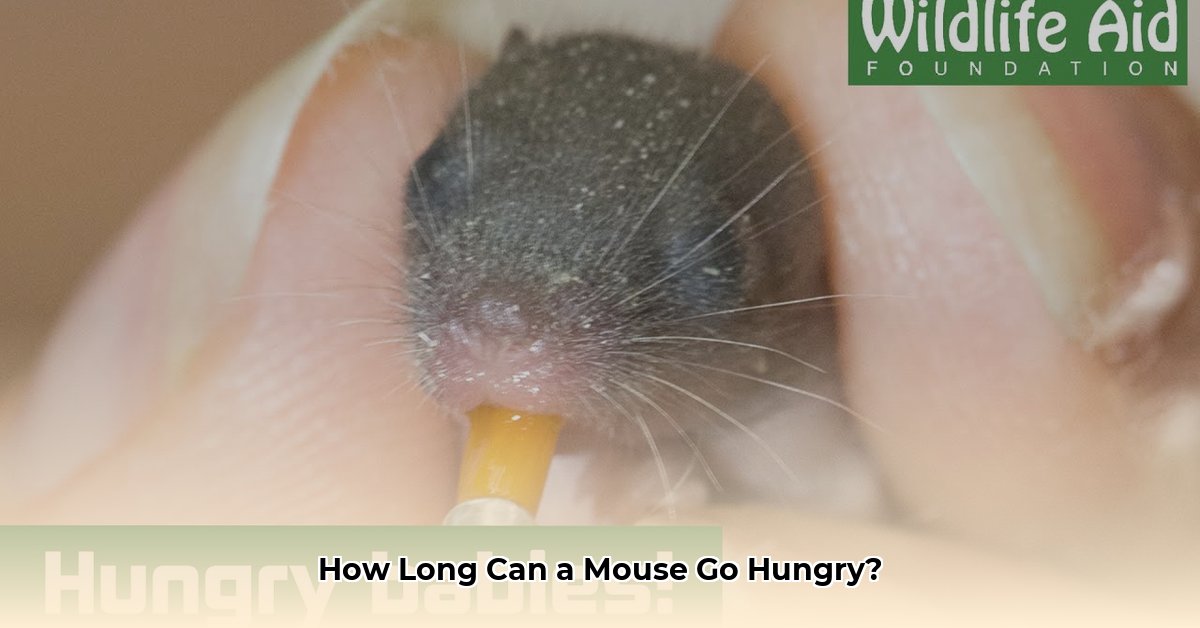Quick Answer: Mice can typically survive for 2-4 days without food, but this can vary depending on factors like water access, age, health, environmental conditions, and species. Eliminating food sources is crucial for pest control but should be combined with other strategies for effective results.
Decoding Mouse Survival: Food and Beyond
Mice, with their rapid metabolisms, require frequent meals. Their small bodies are constantly burning energy, making regular access to food essential. But how long can these resourceful rodents last without a nibble? The typical lifespan without food is around 2-4 days, but this is just a starting point. Several factors influence a mouse’s resilience when food becomes scarce.
Factors Affecting a Mouse’s Fasting Fate
A mouse’s survival without food is a complex interplay of several key elements:
Water: The Most Critical Resource
While food is essential, water is even more vital for mouse survival. Dehydration poses a more immediate threat than starvation. With access to water, a mouse might survive for weeks, potentially even a month or more, even with limited food. Without water, however, survival time shrinks drastically, likely to just a day or two. This is because water plays a fundamental role in nearly all bodily functions, and its absence quickly leads to organ failure.
Age and Health: The Resilience Factor
Like other animals, younger and weaker mice are less resilient to starvation. Young pups haven’t developed sufficient fat reserves, making them particularly vulnerable. Similarly, sick or injured mice already struggling with compromised health will likely succumb to starvation more rapidly. Healthier adult mice, especially those who have had consistent access to food, may have stored fat reserves that can extend their survival for a few extra days.
Environmental Extremes: A Metabolic Challenge
Harsh environments can significantly impact a mouse’s ability to withstand starvation. Extreme temperatures, whether hot or cold, force the mouse to expend more energy to maintain body temperature. This accelerated energy expenditure depletes their limited reserves more quickly, shortening their survival time. Overcrowding adds another layer of stress, increasing competition for scarce resources and further reducing survival odds.
Species Variations: A Tale of Adaptation
Not all mice are created equal. Different species exhibit varying levels of resilience to food deprivation. The common house mouse, remarkably adaptable to human environments, can often find sustenance even in seemingly clean homes. Some wild mouse species, like deer mice, exhibit hoarding behaviors, storing food for lean times. On the other hand, pet mice, accustomed to regular meals, are less equipped to cope with food scarcity and would likely fare poorly in the wild.
Pest Control Strategies: Beyond Starvation
Understanding mouse survival is crucial for effective pest control. While eliminating food sources is a fundamental step, it’s rarely enough on its own. Mice are remarkably resourceful and can exploit even the tiniest crumbs or forgotten spills. A comprehensive strategy involves multiple tactics:
- Food Source Elimination: Store all food, including pet food, in airtight containers. Clean up crumbs and spills promptly, paying attention to hard-to-reach places like under appliances and in pantry corners.
- Water Source Control: Repair leaky pipes and faucets. Ensure standing water is eliminated, including pet water bowls that should be emptied and refilled regularly.
- Entry Point Sealing: Mice can squeeze through incredibly small openings. Seal cracks and gaps in walls, foundations, and around pipes and wires using caulk, steel wool, or other appropriate materials.
- Professional Pest Control: For persistent infestations, consider contacting a professional pest control service. They have the expertise and tools to identify the root causes of the problem and implement effective solutions.
- Traps and Baits: Use traps and baits strategically as part of a multi-pronged approach. Place traps along walls and in areas where mouse activity is suspected.
| Condition | Survival Time (Approximate) |
|---|---|
| With Water | Potentially weeks to a month or more |
| Without Water | 1-2 days |
| Young Mouse | Less than 2-4 days |
| Healthy Adult | 2-4 days (potentially longer with fat reserves) |
| Cold Environment | Reduced survival time |
| Hot Environment | Reduced survival time |
It is important to remember that these are estimates, and a mouse’s actual survival time can vary. Ongoing research continues to refine our understanding of mouse biology and behavior.
Preventing Mouse Infestations: A Proactive Approach
Preventing mice from entering your home in the first place is the most effective way to avoid an infestation. Here are some proactive measures:
- Regular Cleaning: Consistent cleaning eliminates food sources and makes your home less attractive to mice.
- Proper Food Storage: Store all food, including pet food, in airtight containers made of materials mice cannot chew through.
- Landscape Management: Keep vegetation trimmed back from your house to reduce potential harborage areas.
- Exterior Inspections: Regularly inspect the exterior of your home for cracks, gaps, and other potential entry points. Seal them promptly.
By understanding mouse survival needs and employing a multi-faceted approach to pest control and prevention, you can effectively minimize the risk of these unwelcome houseguests.
- How to Stop Apps From Running in the Background to Boost Your - December 1, 2025
- How To Move Apps On Your Droid For Better Organization - November 30, 2025
- How to Move Apps on Android for Better Organization - November 29, 2025










